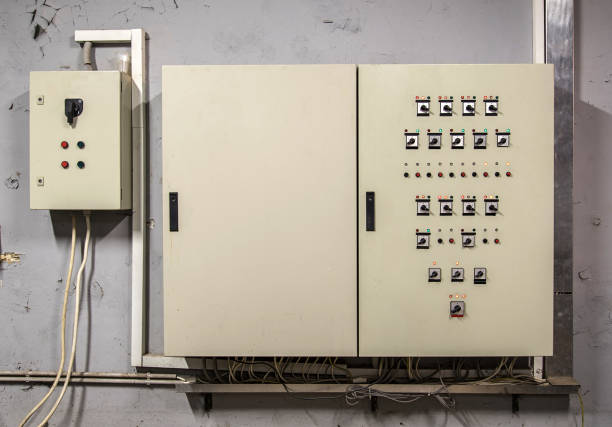Understanding the Working Principle of a Step Up Transformer
In this blog explain how does a step-up transformer work? A step up transformer is a static electrical equipment that raises the voltage of an (AC) electrical power basis. It is sometimes referred to as a high-voltage transformer or a power converter transformer.
It works based on electromagnetic induction, in which a voltage is induced in a secondary coil (secondary coil) by a fluctuating current in a main coil. The amount of turns that every coil has is the secret to adjusting the voltage.
The subordinate coil of a transformer has more chances than the main coil. The voltage transformation is determined by this ratio of turns. The output voltage experiences a “step-up” effect when the secondary coil has more turns since the induced voltage is higher.
Unveiling the Applications of Step Up Transformers:
These transformers are essential components of contemporary power systems and have a wide range of uses. Here are a few well-known applications of step up transformers:
Power Transmission: These transformers, which greatly raise the voltage of energy produced at power plants, are the central component of power transmission networks. Long-distance travel via power lines is made as energy-efficient as possible thanks to this high-voltage transmission. Step-down transformers lower the voltage to levels appropriate for home and commercial usage once they reach inhabited regions.
Industrial Applications: To run large machinery and equipment, industrial facilities frequently need high-voltage electricity. These transformers address this demand by increasing the main grid voltage to satisfy certain industrial specifications.
Wind Turbine Integration: Step-up transformers are essential components of wind energy systems. Generally speaking, wind turbines provide low-voltage power. By raising this voltage to the transmission grid’s voltage, step-up transformers make it possible to integrate wind power into the power grid system effectively.
Thinking beyond these general categories? Here are some additional applications of step-up transformers:
Voltage Boosting for Lighting Systems:
These transformers can be employed in some circumstances to raise voltage levels for specialty lighting systems, such as those seen in big-budget theaters or film sets.
Medical Equipment:
High-voltage operation is required for some medical equipment, such as X-ray machines. For these kinds of uses, step-up transformers can supply the required voltage boost.
Internal Connection: Are you curious about industrial transformers from Shinenergy? Visit our website to check workhouses of transformers for your needs.

Advantages of Step Up Transformers:
This transformer is an essential component of contemporary power networks because it provides effective power distribution and transmission for a range of uses. Step-up transformers may be an integral part of your electrical projects if you choose to use them carefully and are aware of their uses , safety measures, and functioning principles. These industrial step-up transformers have several benefits in a range of applications.
Effective Power Transmission:
These high-voltage step-up transformers greatly minimize energy loss during transmission over long distances by sending power at a greater voltage. This reduces energy waste and results in cost savings.
Reduced Cable Size :
To transfer the same amount of electricity, high-voltage transmission lines need smaller cables than low-voltage lines. This lowers the overall cost of the project and results in savings on infrastructure.
Power Distribution Flexibility:
These transformers provide the ability to change voltage levels by particular requirements. This makes it possible to distribute power effectively across a range of applications, including residential communities and industrial operations.
Step-Up vs. Step-Down Transformers: Understanding the Difference
Step-down transformers function in the opposite way as step-up transformers, which raises voltage levels. In comparison to the secondary coil, the primary coil has more turns. The output current’s voltage level is lowered in this setup. Step-up and step -down transformers are essential parts of the electrical grid that operate together to provide effective voltage distribution and management.
How to choose the right step-up transformer? Key Considerations
The following is an extension of the post on choosing the appropriate step up transformer:
Voltage of Input and Output: Choose a transformer whose input and output voltage parameters meet the requirements of your application. These transformers typically include main voltage options between 13.8 kV and 34.5 kV and secondary voltage options between 480 V, 208 V, and 240 V.
Phase Configuration: Single-phase and three-phase are the two primary configurations for step-up transformers. Single-phase transformers, which are frequently used in residences and small companies, are appropriate for lower-power applications. Industrial settings are more likely to use three-phase transformers because they can handle the higher power requirements of three-phase motors and other equipment.
Cooling Type: Oil-filled and dry-type are the two main ways that these transformers can be cooled. Transformers that are filled with oil provide effective heat dissipation, but they need special maintenance. Although dry-type transformers typically require little maintenance, their overload capability may be restricted.
Maintenance tips for step-up transformers:
Keep it Dry: Water can seriously jeopardize the transformer’s electrical safety and harm its insulation. Keep everything dry around the transformer and don’t put anything that absorbs moisture close by.
Cleaning Cooling Systems: To guarantee enough airflow and avoid overheating, clean cooling systems (fans, filters) regularly. Dust accumulation might hinder heat dissipation and negatively impact the transformer’s functionality.
Keeping Records : To keep thorough records of all examinations, fixes, evaluations, and oil changes. This thorough record-keeping aids in the monitoring of the transformer’s state, the planning of upcoming maintenance, and the identification of any patterns that may call for more research.
Airflow and Ventilation: Make sure there is enough airflow and heat dissipation around the transformer. This avoids overheating, which may jeopardize security and efficiency.
Conclusion :
Shinenergy provides a wide selection of premium step up transformer to meet the needs of various commercial and industrial applications. Our team of professionals is dedicated to providing you with the best transformer options to satisfy your unique requirements. Get in touch with us right now to go over the specifics of your project and find out how Shinenergy can be your dependable power solution partner.

